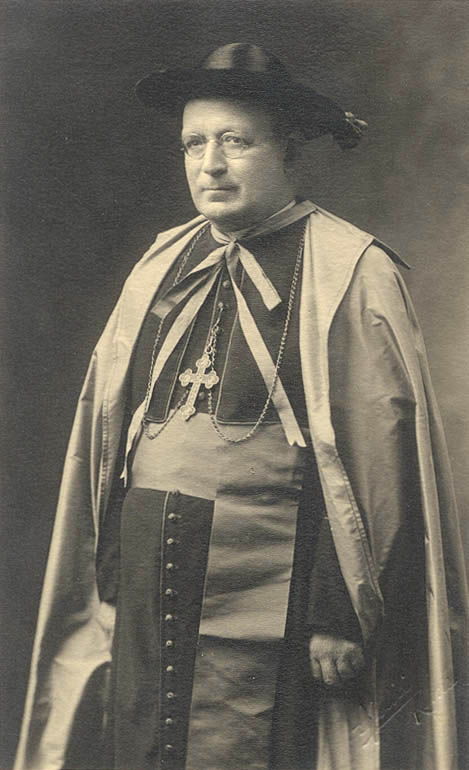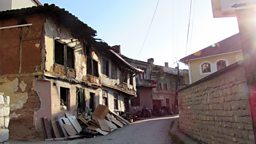On Kosovo Field is over now. This past week Radio 4 has been
broadcasting a drama in the 10.45am/7.45pm slot, based on PJ Harvey’s trips to Kosovo with Seamus Murphy while preparing Hope
Six, using material from her notebooks and the demo versions of songs for
the album. The two central characters, Dardan and Rebekah, are young Kosovans
evacuated to the UK in 1998, and now returning to find out what happened to
their parents after the discovery of a mass grave (‘there were only 19 bodies’)
near their home village. They negotiate their way through the hazardous young
state, and undergo a very strange experience in the mountains where they
discover that the past is not what they thought it was.
Of course I was deliriously
excited: I was getting tearful before we even started. Then just as the first
jangly guitar notes issued from the wireless on Monday morning the doorbell
rang: it was my 11.30am appointment, some 45 minutes ahead of time. ‘Sorry I’m
early’. Yes, you are a bit, aren’t you? Thankfully this is not the Old Days
when if you missed a broadcast, that was it, Sunny Jim; and you, my interloper,
should be more thankful for that even than I. I reorientated my emotional state
and in the end my appointment left at
the time she should have arrived.
PJH fans have of course got very excited about the airing of
material they’ve never heard before. Some of the songs for Hope Six were trailed in live performances before the album was
recorded, but there are pieces in Kosovo
Field which are entirely new to the world: songs called ‘Pity for the Old
Road’ and ‘Dance on the Mountain’ relate directly to poems published in PJ and
Seamus Murphy’s book, The Hollow of the
Hand, and ‘The Red Road’ is the one where she grapples with the troublesome
imagery of fallen plums (‘Think about what I can get a song from. Plums not
good for song’, she admonishes herself in her notebook, pages of which are
included in the e-version of Hollow –
yet she goes ahead and writes one anyway). But ‘Clothes of Grief’ and ‘Where is
our City?’ have no parallel in anything published hitherto, so for
Pollywatchers those compositions are very interesting. Now, to be honest,
there’s nothing earth-shattering about much of this material, and the singer’s
voice, heavily reverbed, at the top of her range and stripped of anything but a
guitar and the occasional piano note, sounds a little awkward. The songs are
just rough outlines for the full versions, and there are presumably good
reasons why some never progressed beyond the demos. But ‘The Red Road’ sounds
rather thrillingly like Balkan folksong; and ‘Clothes of Grief’, composed in the English folk idiom, could have come from the 18th century. It’s jaw-droppingly beautiful. It
would have been interesting to see where both of these might have gone.
As for the drama itself, it starts a bit stiltedly and
oscillates between realism and decidedly non-realistic scenes in a way which,
as a listener, you either decide to run with or away from. The two young actors
playing Dardan and Rebekah have to carry the unorthodox way the play reveals
the characters’ past, and the past of their country, and frankly it’s tough on
them. It sounds strangely as though they’re less real than the very expressive
soundscape around them (which may be the point). But the awareness that,
fiction though this is, it arises from absolute reality, and partly from the
observations and experiences of someone we know (and some of us care a lot
about), carries it forward powerfully.
The author, Fin Kennedy, hasn’t let on how this
‘collaboration’ came about (and of course PJH hasn’t either), and you wonder
what the discussions were like. You might imagine Polly saying, ‘If you want to
use the songs on the album you have to pay Island, but I have these you can
use’, and they are in fact much more appropriate for the form, being less
overpowering. Mr Kennedy and his producer retraced some of the singer’s travels
in Kosovo, and you can spot elements of the songs appearing very directly in
the drama – the woman who looks after the keys of her vanished neighbours’
houses from ‘Chain of Keys’, the ‘blind man [who] sings in Arabic’ who appears
in ‘The Wheel’. In doing so, they provide another layer to the album, just as
the album comments on the world. Pop singers are incessantly questioned about
who has influenced them and, when they survive as long as Polly Harvey has, in
turn get quizzed about the influence they themselves have had on others; but this
is different. This is someone having an effect way beyond their own field,
their work used not just as set-dressing in someone else’s, but their
imagination shaping the imaginative works of others. Here is this woman who
began by strumming a guitar in her bedroom thirty-odd years ago and who now
affects the gravity of our cultural discourse.
When I was at school we went on an organised holiday to
Venice and that included a day out to the Postojna Caverns in what is now
Slovenia but was then (in 1986) still Tito’s Yugoslavia. We had our luggage on
the coach trodden on by a sour-faced border guard, and were ferried on a tiny
railway through the caves by an insane driver who seemed relatively unconcerned
how many of us survived: but that was as far into the Balkans as I’ve ever ventured.
When, over the next decade, Yugoslavia fell apart, I felt unaccountably
affected by it, even as I struggled to understand all the internecine conflict
which forms the background to On Kosovo
Field. It was this series of wars that first made me realise how poisonous
the construction of nationhood could be, and how conflict reveals what people
really feel about each other, or part of what they feel. Across the Balkans
neighbours discovered how they hated one another when they never quite had before,
and found themselves written into savage narratives of resentment that began
centuries before they were born.
I first uncovered my ancestry
From under my neighbour’s body
Where the grass starved to white.
I first learned the sound of my name
As that lascivious knife sucked out
From between his ribs.
I first heard the accents of my motherland
Visiting door to door
With the thin, heady sting of petrol in a can.
Don’t
think it couldn’t happen here. It won’t come immediately, it will take time,
but the walls are a-building: we live in the time of the Making of Nations.
This is clearly Fin Kennedy’s concern, it’s undoubtedly Ms Harvey’s, and it’s
mine.
UPDATE: In fact, On Kosovo Field was featured on Feedback a couple of days ago. In the piece, Fin Kennedy described how the producer, Nadia Molinari, had come to him with the seven songs from PJH, and that after repeated listening he wove the drama out of them. It's interesting that the impetus lay with Ms Molinari: a glance at her Twitter account reveals her to be the usual sort of left-wing troublemaker the Tory newspapers complain about infesting the BBC and to whom no heed should be given. I wonder what the background to that is.
 At the meeting of the local chapter of the SCP last week the conversation, reprehensibly, turned to vestments and the impracticality of the maniple, the embroidered strip of cloth a priest of a traditionalist bent might wear over their left arm (in origin it was a napkin to wipe things up). The consensus was that people don't use them for fear of knocking over everything on the altar. 'Oh, you get used to it', I said ostentatiously. 'I wore a maniple at Christmas', put in one of my brethren. 'It was made of tinsel'. I decided not to pursue the matter. A bit later I saw another of my colleagues blithely topping up his coffee with sparkling water from a bottle. I don't think it'll catch on.
At the meeting of the local chapter of the SCP last week the conversation, reprehensibly, turned to vestments and the impracticality of the maniple, the embroidered strip of cloth a priest of a traditionalist bent might wear over their left arm (in origin it was a napkin to wipe things up). The consensus was that people don't use them for fear of knocking over everything on the altar. 'Oh, you get used to it', I said ostentatiously. 'I wore a maniple at Christmas', put in one of my brethren. 'It was made of tinsel'. I decided not to pursue the matter. A bit later I saw another of my colleagues blithely topping up his coffee with sparkling water from a bottle. I don't think it'll catch on. 



























